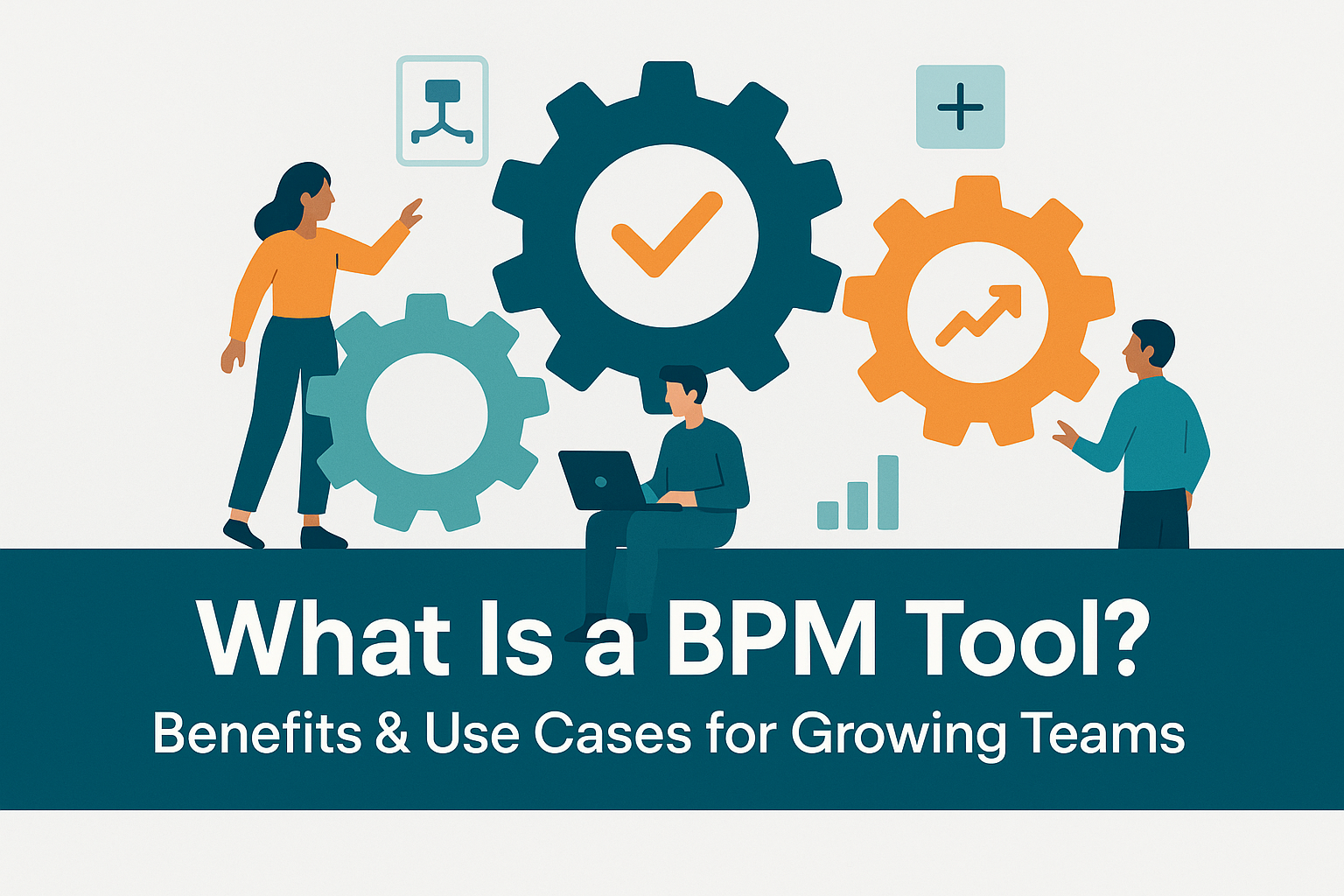In today’s fast-moving business landscape, efficiency and adaptability are key to sustainable growth. As companies scale, managing processes manually becomes increasingly challenging, often leading to miscommunication, delays, and missed opportunities. This is where Business Process Management (BPM) tools come into play.
But what exactly is a BPM tool? How does it benefit growing businesses, and in what areas can it be applied most effectively? Let’s explore.
What Is a BPM Tool?
A BPM (Business Process Management) tool is a software solution that helps organizations design, execute, monitor, and optimize their business processes in a structured and automated way. These tools provide a digital framework to map workflows, assign responsibilities, track progress, and identify bottlenecks—ultimately enabling continuous improvement.
Rather than relying on scattered documents, email chains, or manual task tracking, a BPM tool brings structure and visibility to the way your organization operates.
Why Growing Businesses Need BPM Tools
Growth introduces complexity. With more employees, more clients, and more moving parts, maintaining consistency and quality becomes harder. BPM tools are especially valuable for growing businesses for several reasons:
1. Standardization of Workflows
BPM tools help formalize how tasks are executed. This reduces variation, ensures compliance, and improves quality across teams.
2. Increased Operational Efficiency
By automating repetitive tasks and approvals, BPM tools save time and reduce human error. This allows your team to focus on strategic, high-value activities.
3. Better Visibility and Control
Real-time dashboards and reporting capabilities allow managers to track process performance and spot inefficiencies early on.
4. Scalability
With BPM tools in place, businesses can scale operations more smoothly, without the usual chaos of growing pains.
5. Enhanced Collaboration
Teams across departments can coordinate through shared workflows, reducing silos and boosting communication.
Key Features to Look For
While different BPM platforms may vary in appearance or technical depth, growing businesses should prioritize tools that offer:
- Drag-and-drop process modeling
- Role-based access and task assignment
- Real-time notifications and alerts
- Analytics and performance metrics
- Integration capabilities with existing tools
- Cloud-based access for remote teams
Choosing a BPM tool with these features helps ensure long-term value and flexibility.
Common Use Cases for BPM Tools in Growing Companies
1. Onboarding New Employees
Automated workflows ensure new hires complete all required steps—document submission, training, access setup—without HR chasing down tasks manually.
2. Customer Support Ticketing
Track and manage incoming customer requests with predefined escalation paths, automatic status updates, and task routing.
3. Invoice Approval and Payment Processing
Streamline finance operations by automating invoice reviews, approvals, and audit trails.
4. Contract Management
Ensure legal documents pass through the proper review and approval flows, maintaining version control and reducing risk.
5. Compliance and Audit Reporting
Create repeatable workflows for compliance checklists and documentation, ensuring nothing is overlooked.
Long-Term Benefits of BPM Adoption
Over time, the use of a BPM tool results in:
- Improved customer experience
- Shorter turnaround times
- Reduced operational costs
- Stronger accountability
- More agile responses to change
These benefits contribute not only to internal efficiency but also to the brand’s reliability in the eyes of clients and partners.
Ready to Transform How Your Business Runs?
At Weoll, we believe growing companies deserve tools that are powerful yet easy to use. Our all-in-one platform integrates process management, document workflows, automation, and team collaboration—so you can scale with confidence.
Visit weoll.com today and discover how to streamline your business, one process at a time.




